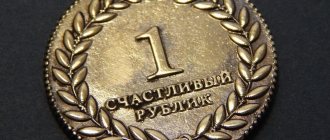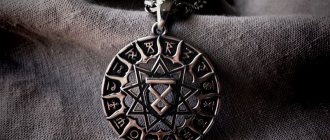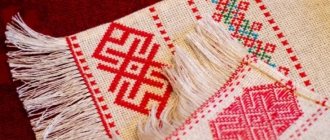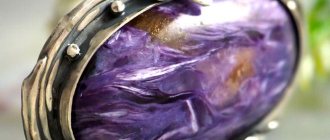Lapti - low shoes, common in Rus' in the old days, and widely used in rural areas until the 1930s, woven from tree bast (linden, elm, willow and others), birch bark or hemp
For strength, the sole was braided with vine, bast, rope or hemmed with leather. The bast shoe was tied to the leg with frills (laces twisted from the same bast from which the bast shoes themselves were made).
Russian bast shoes. Ryazan Oblast. , CC BY-SA 4.0
Bast shoes were distinguished by their extremely low cost, due to the abundance of material and ease of manufacture - men were taught to weave bast shoes from childhood and later their dexterity made it possible to make such shoes literally “in between times”, but at the same time they were short-lived.
Manufacturing
Material
To make one bast, seven basts, each two meters long, are required. The width of one bast is approximately equal to the width of the thumb on the hand of a man who prepared the bast himself and subsequently wove bast shoes himself.
Birch bark bast shoes. Natalya Zhidyak. Veliky Ustyug, Vologda region, Russia. 2021 Guide to Russian Crafts, CC BY-SA 3.0
For weaving, a bast was required from a flat part of the trunk so that along its entire length it would not have defects. That is, mature, even, tall linden trees were selected for harvesting bast. Often, after the total loss of bark suitable for weaving, the tree stood with a bare, “stripped” trunk. This is reflected in the Russian language in the form of a figurative expression “to peel off like a sticky stick” meaning “to take away all the useful resources available to someone or something.”
Consumption
Lapti were not woven in all regions of Russia, but were used in more regions than they were made. That is, they were a commodity or an object of barter.
Bast shoes (shoe covers) bast, Public Domain
As a rule, bast shoes were not woven in villages where the population was mostly engaged not in agriculture, but in crafts, for example, pottery or blacksmithing.
Tools
To weave bast shoes, a wooden block was required, approximately corresponding to the size of a man's or woman's foot. We can say that approximate sizes, such as modern S, M, L, XL, XXL and XXXL, were used by the Russian peasantry already in ancient times.
In addition to the block, you also needed a knife for cutting bast and a special tool called kochedyk, which is something like a screwdriver with a wooden handle and a metal rod that has a flat, horizontal end, but, most importantly, curved in the vertical plane and shaped like part of a circle with a diameter of 1 .5 - 2 inches. The purpose of this tool is to lift one of the loops of the already woven part of the bast shoe in order to insert the free end of the bast into it.
Weaving technology
Bast shoes begin to be woven from the heel. To begin with, only five basts are used. The weaving is simple, in which one bast alternately first presses the adjacent one with its plane, remaining on top, but then itself is pressed by the next bast and is located under it, and so on along its entire length. When all the basts are intertwined and reach the edge with their ends, they bend back and intertwine further, continuing the length of the plane thus formed.
A man weaves a laptilubka from the 18th (?) century, Public Domain
They begin to weave the heel by bending the basts in half through the “shithole” - a bast twisted into a cord. The govennik should be a bast cord tied in a circle, forming the edge of the opening of the future bast shoe into which the foot is inserted.
Lesson on weaving bast shoes, CC BY-SA 3.0
After the heel is woven and “pulled” along the block, then on both sides (also bent in the middle, first in one and then in the other half) the last two basts are woven in and the sole continues to weave, and then the “head” of the bast shoe. . When the length of the sole is enough to bend it upward and close the toes before the instep (to form the “head” of the bast), then the sole bends around through the shoe (now from the front side of the bast), and the remaining ends of the bast continue to weave from above in the opposite direction along the length of the sole, thereby forming the second, outer layer of the bast shoe.
Kochedyk
It is at this stage of weaving that the kochedyk begins to be used. They lift the already woven loops to insert the ends of the bast into them. Using the handle of the kochedyk, the raised loop is nailed back.
Kochedyk for weaving bast shoes.
Having reached the edges of the sole, some of the bast shoes, symmetrically on the right and left sides, also bend over the shoe, pulling the sole towards it and giving the sides of the bast shoe a vertical position, and the bast shoe itself a shape similar to a shoe. Having become “double-layered”, the bast shoe acquires greater strength.
Repair
After the outer layer of the bast shoe has worn out to such an extent that wearing the bast shoe becomes uncomfortable, the bast shoe can be repaired for a while. Among the peasants this was called “picking up.” This means that instead of the worn-out basts of the outer layer, using a kochedyk, insert scraps of new basts. But it was believed that only the poor, who did not have the opportunity to purchase even new bast shoes, resorted to such a “picking” operation. This is reflected in classical Russian literature, for example, by N. A. Nekrasov in the poem “Kalistrat”:
And the housewife does the laundry for the naked children. She dresses up more than her husband, wears bast shoes with a hem.
What other ancient Russian amulets exist?
In addition to bast shoes, in Ancient Rus' there were many more protective amulets that were used for various purposes:
- a wreath made from willow or willow branches into which various dry magical herbs, ears of corn, flowers and other plants are woven. The wreath is also decorated with corn and bean kernels, which are attached to the item by gluing. The amulet is framed with satin ribbons of red and green colors. On the back side of the wreath, several pins are attached with the point up, protecting against damage and the evil eye. This amulet is hung above the front door. It will not only scare away evil spirits and magical negativity, but will also attract prosperity to the house;
- a bag that is sewn from natural white fabric. Fill the amulet with push pins, dried mint, lavender and salt purchased for Easter. Place the amulet in a place hidden from prying eyes. Such a talisman will protect you from envious people, ill-wishers and magical machinations. If the bag is filled with gold coins, grain, rose hips and seeds, this amulet will attract prosperity and good luck to the house;
- a horseshoe, which you can purchase in a specialized store or make yourself. The way to make a talisman is to take a piece of thick cardboard, cut out a horseshoe from it, cover it with natural fabric and decorate it to your taste. They hang the amulet over the front door with its horns facing up. The amulet promotes the acquisition of wealth;
- broom. It is made from magical plants that protect people and their homes from all negativity, and is decorated with nuts, sunflower seeds, corn, rose hips, and a piece of burlap must be present. To protect the house from outside attacks, the amulet is hung on the outside of the front door with the handle down. You can buy a special decorative broom that is placed in the kitchen. Such a talisman will attract good luck and prosperity;
- pot to attract wealth. They buy a ceramic pot and pour selected wheat into it, add a few coins, some nuts and corn kernels. All these elements symbolize wealth and well-being. The amulet is placed in the pantry or near the stove. It is believed that the spirit of the home will be kept in this pot.
Lapti, as well as the other listed ancient Russian amulets and amulets, will not only be a powerful protection against negativity, but also an excellent decoration for the home.
Usage
Bast shoes were worn with foot wraps (onuchs).
From the bast shoe up and around the shin, in the manner of an ancient Greek sandal, there was a bast cord, which at the bottom was attached to the shank of the bast shoe and kept the footcloth from unwinding. Nevertheless, when walking for a long time, I periodically had to change my shoes and rewind my stray footcloths. Weaving bast shoes was a winter occupation for peasants in Rus' when there was no field work. Bast was harvested during a certain summer season, when the bast had the necessary strength characteristics.
Lapti, CC BY-SA 3.0
New, freshly woven bast shoes were made one last at a time and in a pair they did not differ from left to right.
A pair of bast shoes was enough for a man for a week, no more. Hence the saying: “To go on a journey, weave five bast shoes!”
Trophy ersatz felt boots. Winter 1942/1943. , CC BY-SA 3.0
Academician of the St. Petersburg Academy of Sciences I. Lepyokhin wrote at the end of the 18th century that to make one pair of bast shoes, two large and three or four small linden trunks were required. A peasant wore out 50 to 60 pairs of bast shoes per year. According to the calculations of the historian L. Milov, a family of 4 people sometimes required up to 150 pairs of bast shoes (worth about 1.5-2.5 rubles). The peasants went to such lengths of labor because the required amount of money to buy leather shoes was too large. To buy boots for himself, the peasant had to sell a quarter of the collected grain, and another two quarters for his wife and children.
Amulet in the form of shoes in other countries
Shoes are also used as amulets in other countries, for example, in India, Finland, Turkey and many other nationalities. Various types of shoes were used in various rituals and ceremonies. In India and Turkey, shoes or shoes were placed on houses to protect against the entry of evil spirits into the home, as well as from damage and the evil eye. During a gypsy wedding, shoes were thrown into the tent of the newlyweds to speed up the conception of their first child, and in Canada, old worn-out shoes were placed in the garden beds to ensure a rich harvest.
Story
One of the first mentions of bast shoes is found in the Tale of Bygone Years (12th century), while the bast shoes themselves are much older: tools for weaving (kochedyki) have been known since the Stone Age. Describing the victory of the Kyiv prince Vladimir the Red Svyatoslavich and his uncle Dobrynya over the Volga Bulgars, the chronicler attributes the following words to Dobrynya: “I saw a convict, and the essence is all in boots. Don’t pay us this tribute, go look for the bast workers” (“I looked at the prisoners, and they were all wearing boots. These won’t pay us tribute; let’s go with you to look for the bast workers.”
The description below is based on an article from the Brockhaus and Efron encyclopedia (early 20th century):
In the 19th century, bast shoes were woven from bast using an iron hook called a kadach
, and a wooden block.
Sometimes, as, for example, in Polesie, bast shoes consisted of only one sole
, but in most cases they were given the shape of a shoe, and then the top of the front part of the shoe was braided with bast and the backs were attached. The free ends of the bast were bent back inward and secured, which made the edges of the hole even and did not rub the legs. At the edges of the hole, ears were attached from the same basts, so that with the help of straps inserted into these ears, tightening the latter could narrow the hole and thereby attach the bast to the leg. The best material for bast shoes was considered to be linden bast, torn from young, no thicker than 1½ inches thick, sticky and distinguished by its strength. In the northern provinces, for lack of linden trees, they tore bast from birch trees; Such bast is weakly durable, and bast shoes made from it are worn for no more than a week. Vine bast was used only in Polesie. The length of the linden bast is mostly 3 arshins; a pair of bast shoes gives 32 bast trees, and one sticky tree gives 3-4 bast trees, so you need 3-4 trees for a pair of bast shoes. Since the majority of residents of northern and eastern Russia wore bast shoes, the consumption of birch and linden bast and the associated destruction of young forests was very high. There was no exact accounting of the production of bast shoes; a significant part of these shoes were made directly by consumers, mostly the oldest members of families, already incapable of other work. Sometimes, however, the production of bast shoes received significant concentration; So at the end of the 19th century, in the village of Smirnov, Ardatovsky district, Nizhny Novgorod province, up to 300 people were engaged in this business, and each one prepared up to 400 pairs of bast shoes in the winter. In the village of Semenovskoye, near Kineshma, they produced 100 thousand rubles. bast shoes, distributed throughout Russia. From the village of Myt, Shuisky district (Vladimir province), 500 thousand pairs of bast shoes were sent to Moscow.
During the Civil War (1918-1920), most of the Red Army wore bast shoes; a special commission was involved in their preparation.
Notes
- Lapa: Lapot // Explanatory dictionary of the living Great Russian language: in 4 volumes / author's compilation. V. I. Dal. — 2nd ed. - St. Petersburg. : Printing house of M. O. Wolf, 1880-1882.
- Lapti // Encyclopedic Dictionary of Brockhaus and Efron: in 86 volumes (82 volumes and 4 additional ones). - St. Petersburg, 1890-1907.
- ↑ 12
Belarusian USSR: Concise Encyclopedia. In 5 volumes / Editorial Board. I. P. Shamyakin (editor-in-chief) and others - Mn.: BelSe im. P. Brovki, 1981. - T. 4. - 712 p. — 50,000 copies. - Milov L.V. Great Russian plowman and features of the Russian historical process. M.: Russian Political Encyclopedia (ROSSPEN), 2001. P. 329.
- L. Panteleev, G. Belykh. The story "Lapti".
- SRNG:16, 1980, p. 266.
- Ionova Yu.V. Characteristic features of Korean clothing and some issues of its development
Typical types of bast shoes and manufacturing methods
Lapot m. Lapotok; bast shoes, bast shoes m. postsoli south. zap. (German Basteln), short wicker footwear, ankle-length, made from bast (lychniki), mochala (mochalyzhniki, ploshe), less often from the bark of willow, willow (verzki, ivnyaki), tala (shelyuzhnik), elm (elm) , birch (birch bark), oak (oak), from thin roots (korenniki), from young oak chips (dubachi, chrng.), from hemp combs, broken old ropes (kurpa, krutsy, chuna, sheptuny), from horse manes and tails (hairworts), and finally from straw (strawworts, chickens).
Chuni - bast shoes made of ropes (analogous to hemp ones). , CC BY-SA 3.0
The bast shoe is woven in 5-12 rows, bunches, on a block, with a kochedyk, a cat (an iron hook, a pile), and consists of a wattle (sole), a head, heads (front), an earpiece, a collar (borders on the sides) and a heel; but the bast shoes are bad, simply woven, without a collar, and fragile; The collar or border meets at the ends of the heel, and when tied together, forms an obornik, a kind of loop into which the frill is threaded. The transverse basts that are bent on the ear guard are called kurts; there are usually ten kurts in the fence. Sometimes they pick up the bast shoes and pass along the fence with bast or tow; and the painted bast shoes are decorated with a patterned undercut. (Dahl's Dictionary)
Birch bark bast shoes. Master: Natalya Zhidyak. Veliky Ustyug, Vologda region, Russia. 2021 Taken, weaving. Guide to Russian crafts, CC BY-SA 3.0
The strongest and softest in this series were considered to be bast bast shoes, made from linden bast, and the worst were willow carpets and bast shoes, which were made from bast. Often bast shoes were named according to the number of bast strips used in weaving: five, six, seven. At seven o'clock they usually wove winter bast shoes. For strength, warmth and beauty, the bast shoes were woven a second time using hemp ropes. For the same purpose, a leather outsole was sometimes sewn on. For a festive occasion, written elm bast shoes made of thin bast with a black woolen braid, which was fastened to the legs, were intended. For autumn-spring chores in the yard, simple high wicker feet without any braid were considered more convenient. Bast shoes made from strips of fabric were called bast shoes. Bast shoes were also made from hemp rope - krutsy, and even from horsehair - hair. These shoes were worn at home or worn in hot weather.
Great Russian bast shoes had oblique weaving, while in the western regions they used straight weaving, or “straight lattice”. In Ukraine and Belarus, bast shoes began to be woven from the toe, while Russian peasants did the work from the back. Moscow bast shoes, woven from bast, are characterized by high sides and rounded toes. In the North, they usually made bast shoes from birch bark with triangular toes and relatively low sides. Mordovian bast shoes, also common in the Nizhny Novgorod and Penza provinces, were woven from elm bast.
Share link:
- Click here to share content on Facebook. (Opens in a new window)
- Click to share on WhatsApp (Opens in new window)
- Click to share on Pinterest (Opens in new window)
- Click to share on Skype (Opens in new window)
- Click to share on Telegram (Opens in new window)
- Click to share on Twitter (Opens in new window)
- Click to share posts on Pocket (Opens in new window)
- Click to share on Reddit (Opens in new window)
- Click to share on LinkedIn (Opens in new window)
- Click to share posts on Tumblr (Opens in new window)
- Send this to a friend (Opens in new window)
- Click to print (Opens in new window)










